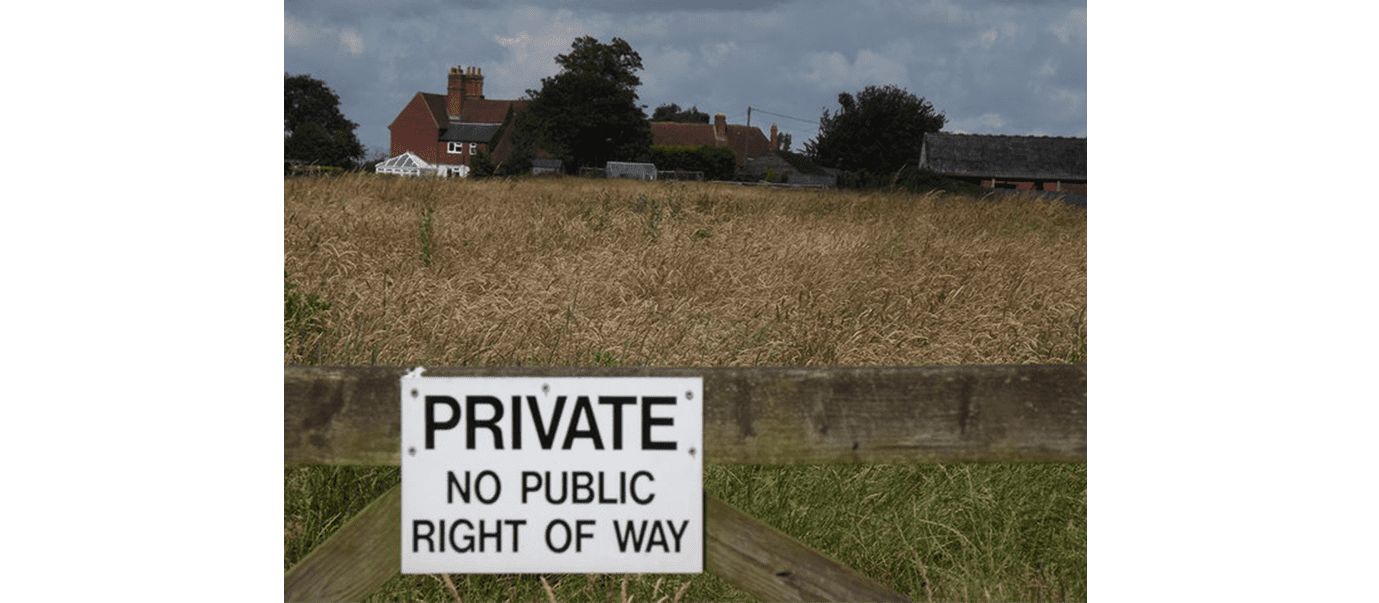Time running out to register your ‘Right of Way’


Time running out to register your ‘Right of Way’
The Land and Conveyancing Law Reform Act 2009 has brought about many changes to Irish Property Law. The 2009 Act makes considerable changes to the Law relating to the acquisition of Easements by long usage. The legal term for an entitled Easement through long usage is ‘Prescription’.
An Easement is the right of one land owner to do something on a neighbour’s land or to stop the neighbour from doing something on the neighbour’s own land. The most common form of Easement are Rights of Ways or Wayleaves. A Right of Way is the right to continued passage over land that you do not own. A Wayleave is the term used for continued access to maintain any services that runs through lands you do not own.
Before the introduction of the Land and Conveyancing Law Reform Act 2009, Rights of Ways could be granted formally in writing by the owner of the land over which access was required to the owner of land who needs the access. These may/may not be registered with the Property Registration Authority (formerly known as the Land Registry).
The second and most common method of acquiring a Right of Way was by long usage. Prior to the 2009 Act the user of a Right of Way had to establish proof of 20 years continuous usage (longer if the land owner is the State). Once proof was established of at least 20 years of continuous use of a laneway, the person using the laneway could establish a Right of Way. If they were selling the property that benefits from the Right of Way, the vendor could swear a formal statutory declaration of long usage. This would have been accepted in conveyance as proof to the existence of a valid Right of Way. There was no requirement for the Right of Way to be registered with the Property Registration Authority.
After the Land and Conveyancing Law Reform Act 2009
After the 1st of December 2009, to secure any formal grant of Right of Way obtained by deed or on foot of a Court Order it is necessary to register this in the Property Registration Authority. The Act changed the rules for Easements via Prescription but there is a period in which Land owners can formally get their Rights of Ways in order. The 2009 Act brought in a transition period within which you had to have your Easement registered with the Property Registration Authority. This transition period was extended to 12 years (from 3 years) by the Civil Law (Miscellaneous Provisions) Act 2011 and expires on 1st December 2021. This applies to easements that are acquired by prescription but also to Easements that have been granted by deed where these are not already registered.
It is vital to remember that if you have been using an easement you could find that you lose that right if it is not registered with the Property Registration Authority. If the Easement is not registered then the right may be extinguished and the time for re-acquiring that right, twelve years (under the new Act), starts all over again from 1 December 2021 with previous use not being considered. The result could be the complete loss of the Right of Way. To register a Right of Way by prescription, the claimant must show that they have free use of the Right for the required time (20 years) prior to the passing of the Land and Conveyancing Law Reform Act 2009 on 1st December 2009. If a Right of Way was not established by December 1, 2009, the claimant must show 12 years of continuous use from December 2009; this means that the earliest this can take place is December 2021.
In conclusion where a person does not have the benefit of a registered Right of Way or a Right of Way created by Deed and is in fact claiming entitlement to a Right of Way by Prescription it would be important for such persons to take action to have them registered before 30th November 2021. After that date an entitlement to a Right of Way can only be established by way of a Court Order. In all cases where an application must be made to the Property Registration Authority, a Land Registry Compliant map must be produced and submitted with the application.
ORS is advising clients to act now as this is a lengthy process. The firm specialises in mapping surveys and certifying ‘Land Registry Compliant’ maps. If you think that the Land and Conveyancing Law Reform Act 2009 affects you, talk to ORS at info@ors.ie.
